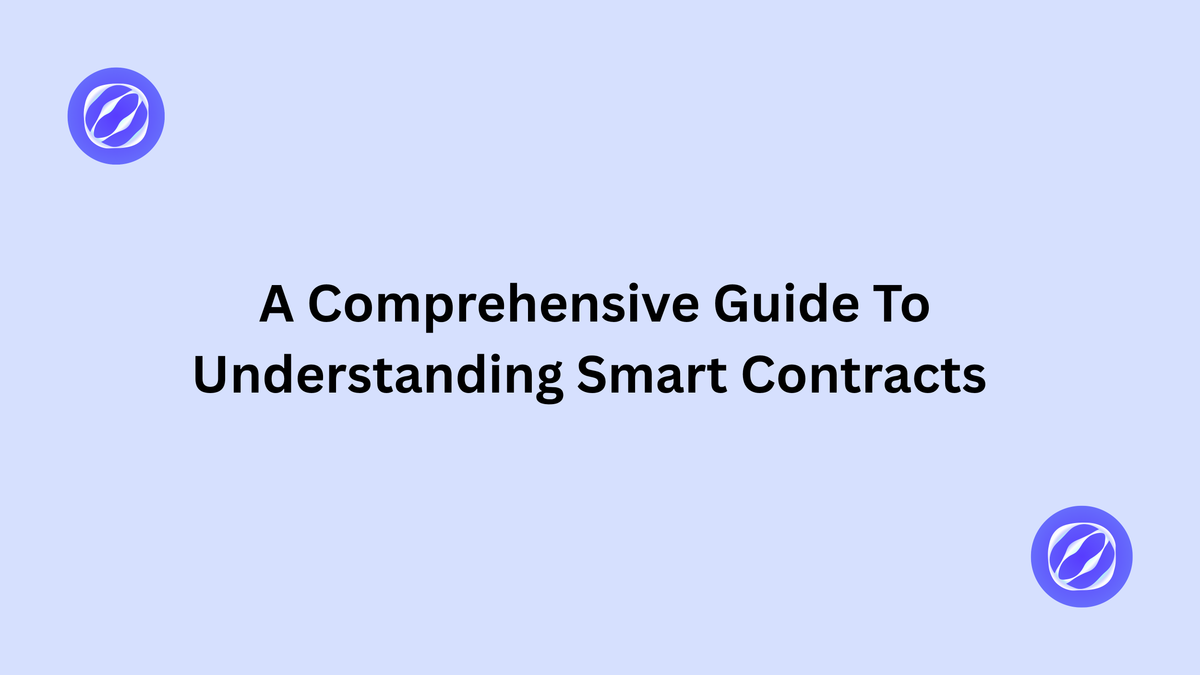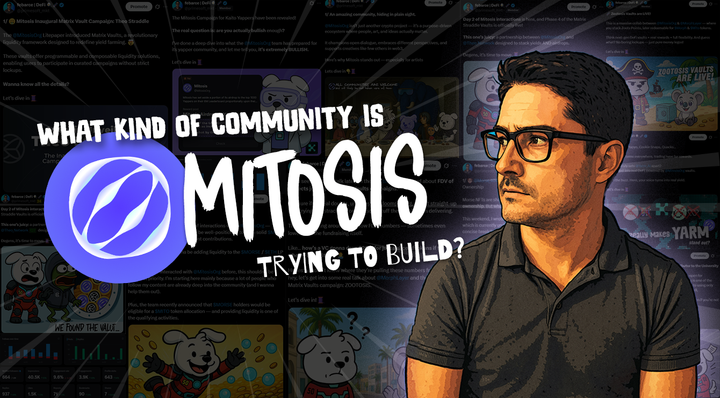A Comprehensive Guide To Understanding Smart Contracts In Web3

Smart contracts are one of the foundational technologies powering Web3, the decentralized, blockchain-based vision of the internet. They enable trustless, automated, and secure transactions without intermediaries, revolutionizing industries from finance to supply chain management. This article provides a detailed and explanatory overview of smart contracts, their role in Web3, how they work, their benefits, challenges, and real-world applications. What Are Smart Contracts? A smart contract is a self-executing computer program stored on a blockchain that automatically enforces the terms of an agreement when predefined conditions are met. You can think of it as a digital version of a traditional contract, but instead of being written on paper and enforced by lawyers or courts, it’s written in code and executed by a decentralized network of computers. The term "smart contract" was coined by computer scientist Nick Szabo in 1994, who described it as “a set of promises, specified in digital form, including protocols within which the parties perform on these promises” while Szabo’s vision predated blockchain technology, the rise of Ethereum in 2015 brought smart contracts to prominence by providing a platform to deploy and execute them. It's a decentralized internet where users control their data, identity, and transactions . Smart contracts are the backbone of applications that operate without centralized control, such as decentralized finance (DeFi), non-fungible tokens (NFTs), and decentralized autonomous organizations (DAOs). How Do Smart Contracts Work? Smart contracts operate on blockchain networks, which are decentralized ledgers that record transactions transparently and immutably. Here’s a step-by-step breakdown of how they function: 1. Code Creation A developer writes the smart contract in a programming language like Solidity (used on Ethereum) or Rust (used on Solana). The code defines the rules, conditions, and actions of the contract. For example, a smart contract for a crowdfunding platform might specify: “If 100 ETH is collected by December 31, transfer funds to the project creator; otherwise, refund contributors.” 2. Deployment to the Blockchain Once written, the smart contract is compiled into bytecode and deployed to a blockchain (e.g Ethereum, Binance Smart Chain ). The contract is assigned a unique address on the blockchain, making it accessible to users and other contracts. 3. Triggering Conditions Smart contracts are event-driven. They remain dormant until specific conditions (encoded in the contract) are met. These conditions could be: - A specific date or time. - A transaction (e.g sending cryptocurrency to the contract’s address). - An external data input via an “oracle” (a service that feeds real-world data to the blockchain, like stock prices or weather data). 4. Execution When conditions are met, the smart contract executes automatically. For example, it might transfer funds, mint an NFT, or update a record. Execution occurs across the blockchain’s network of nodes, ensuring consensus and preventing tampering. 5. Immutability and Transparency Once deployed, a smart contract’s code is typically immutable (on most blockchains), meaning it cannot be altered unless explicitly designed to allow upgrades. All transactions and outcomes are recorded on the blockchain, making them transparent and auditable. Example Imagine a smart contract for a decentralized marketplace. A buyer sends 1 ETH to the contract to purchase an item. The contract holds the funds in escrow until the seller confirms delivery (via an oracle or manual input). Once confirmed, the contract releases the ETH to the seller. If delivery isn’t confirmed within a set timeframe, the funds are refunded to the buyer all without a middleman. Features of Smart Contracts Smart contracts have several defining characteristics that make them powerful tools in Web3: 1. Automation: They execute automatically when conditions are met, eliminating manual processes. 2. Trustlessness: Parties don’t need to trust each other; the blockchain ensures the contract is executed as coded. 3. Immutability: Once deployed, the contract’s logic cannot be changed, ensuring reliability (though this can also be a drawback). 4. Transparency: The code and transaction history are publicly verifiable on the blockchain. 5. Decentralization: Smart contracts run on a distributed network, reducing reliance on centralized authorities. 6. Security: Cryptographic mechanisms protect smart contracts, though vulnerabilities in code can be exploited (more on this later). The Role of Smart Contracts in Web3 Web3 aims to create a user-centric internet where individuals control their data, assets, and interactions without intermediaries like banks, tech giants, or governments.
Smart contracts are critical to this vision because they:
Enable Decentralized Applications (dApps): Most Web3 applications, from DeFi platforms like Uniswap to NFT marketplaces like OpenSea, rely on smart contracts to handle transactions, governance, and logic. Facilitate Decentralized Finance (DeFi): Smart contracts power lending, borrowing, trading, and yield farming without banks or brokers.
Support Digital Ownership: NFTs, which represent unique digital assets, are created and managed via smart contracts. Enable Governance: DAOs use smart contracts to automate decision-making and voting processes, allowing communities to govern themselves. Reduce Intermediaries: By automating trust, smart contracts eliminate the need for middlemen in industries like real estate, insurance, and supply chains. Benefits of Smart Contracts Smart contracts offer numerous advantages, particularly in the context of Web3: 1. Efficiency: Automation reduces time and costs associated with manual processes and intermediaries. 2. Trust and Security: Blockchain’s cryptographic security and decentralization minimize the risk of fraud or manipulation. 3. Cost Savings: By removing middlemen (e.g escrow services, notaries), smart contracts lower transaction costs.
4. Accuracy: Code-based execution eliminates human error in contract enforcement. 5. Global Accessibility: Anyone with an internet connection and a crypto wallet can interact with smart contracts, fostering financial inclusion. Real-World Applications of Smart Contracts Smart contracts are transforming industries by enabling decentralized, transparent, and efficient systems. Here are some notable use cases: 1. Decentralized Finance (DeFi) - Platforms like Aave and Compound use smart contracts to facilitate lending and borrowing of cryptocurrencies without banks. - Automated Market Makers (AMMs) like Uniswap use smart contracts to enable decentralized trading. 2. Non-Fungible Tokens (NFTs) - Smart contracts define the ownership, transfer, and royalties for NFTs, enabling digital art, collectibles, and gaming assets. 3. Supply Chain Management - Smart contracts track goods through supply chains, ensuring transparency and authenticity. For example, IBM’s Food Trust uses smart contracts to trace food from farm to table. 4. Insurance - Smart contracts automate claims processing. For instance, a flight delay insurance contract could automatically pay out if an oracle confirms a delay. 5. Real Estate - Smart contracts streamline property transactions by automating title transfers, escrow, and payments, reducing paperwork and costs. 6. Decentralized Autonomous Organizations (DAOs) - DAOs use smart contracts for governance, allowing members to vote on decisions and allocate funds transparently. 7. Gaming - Blockchain-based games use smart contracts to manage in-game assets, ensuring players truly own their items. Popular Platforms for Smart Contracts Several blockchains support smart contract development, each with unique features: 1. Ethereum: The pioneer of smart contracts, Ethereum supports complex dApps using Solidity. It’s the most widely used platform but faces scalability challenges. 2. Binance Smart Chain (BSC): Known for low transaction fees, BSC is compatible with Ethereum’s tools, making it popular for DeFi and NFTs. 3. Solana: Offers high-speed transactions and low costs, using Rust for smart contracts (called “programs”) Smart contract security is critical, as vulnerabilities can lead to significant losses.
Layer-2 solutions like Arbitrum and Optimism are reducing costs and increasing transaction speeds on Ethereum. Combining smart contracts with AI (e.g for predictive oracles) could enhance automation and decision-making. As governments clarify blockchain regulations, smart contracts may gain legal recognition. User-friendly tools and lower barriers to entry will drive broader adoption in industries like healthcare, education, and governance. If you found this insightful, kindly like comment and share .


Comments ()